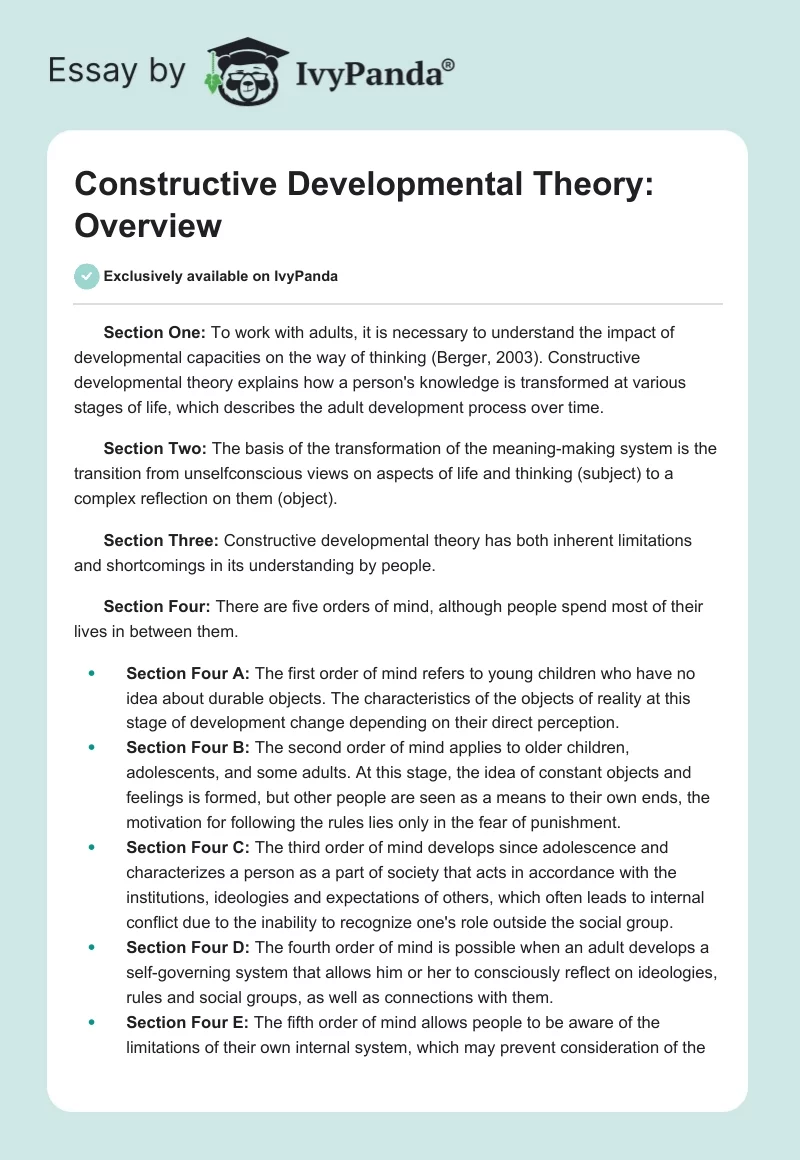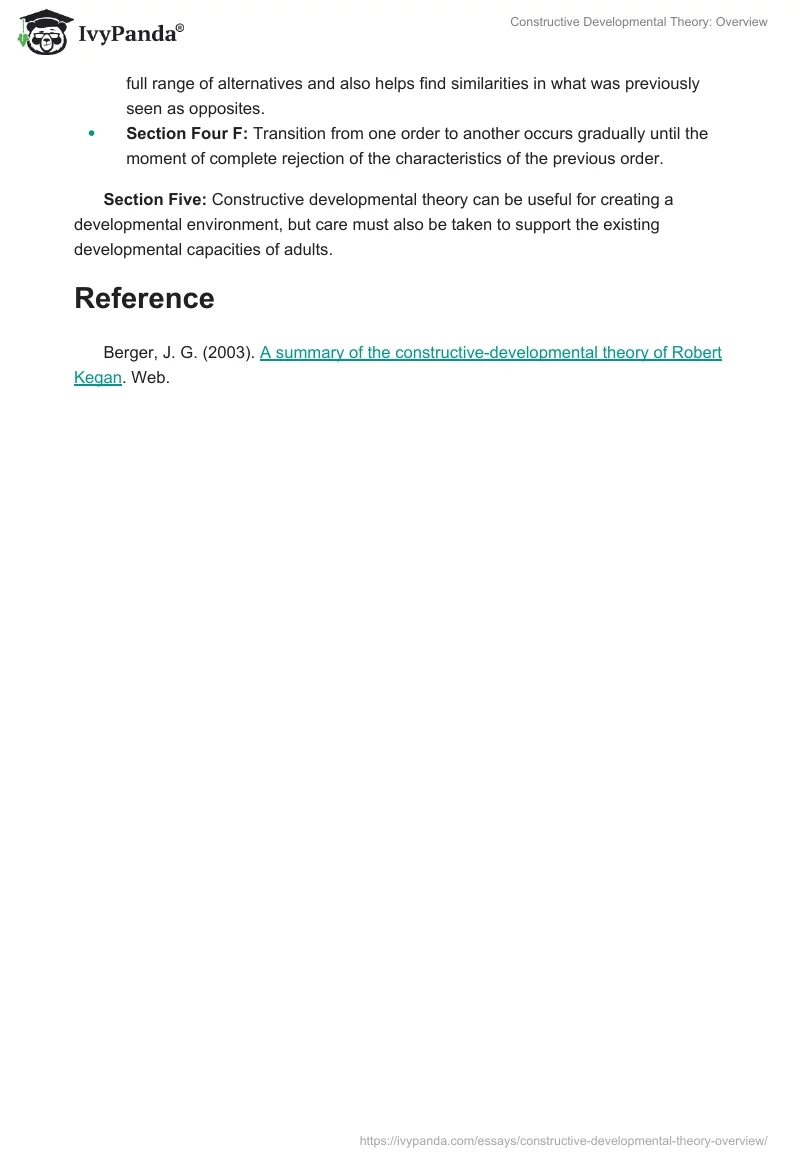Section One: To work with adults, it is necessary to understand the impact of developmental capacities on the way of thinking (Berger, 2003). Constructive developmental theory explains how a person’s knowledge is transformed at various stages of life, which describes the adult development process over time.
Section Two: The basis of the transformation of the meaning-making system is the transition from unselfconscious views on aspects of life and thinking (subject) to a complex reflection on them (object).
Section Three: Constructive developmental theory has both inherent limitations and shortcomings in its understanding by people.
Section Four: There are five orders of mind, although people spend most of their lives in between them.
- Section Four A: The first order of mind refers to young children who have no idea about durable objects. The characteristics of the objects of reality at this stage of development change depending on their direct perception.
- Section Four B: The second order of mind applies to older children, adolescents, and some adults. At this stage, the idea of constant objects and feelings is formed, but other people are seen as a means to their own ends, the motivation for following the rules lies only in the fear of punishment.
- Section Four C: The third order of mind develops since adolescence and characterizes a person as a part of society that acts in accordance with the institutions, ideologies and expectations of others, which often leads to internal conflict due to the inability to recognize one’s role outside the social group.
- Section Four D: The fourth order of mind is possible when an adult develops a self-governing system that allows him or her to consciously reflect on ideologies, rules and social groups, as well as connections with them.
- Section Four E: The fifth order of mind allows people to be aware of the limitations of their own internal system, which may prevent consideration of the full range of alternatives and also helps find similarities in what was previously seen as opposites.
- Section Four F: Transition from one order to another occurs gradually until the moment of complete rejection of the characteristics of the previous order.
Section Five: Constructive developmental theory can be useful for creating a developmental environment, but care must also be taken to support the existing developmental capacities of adults.
Reference
Berger, J. G. (2003). A summary of the constructive-developmental theory of Robert Kegan. Web.


